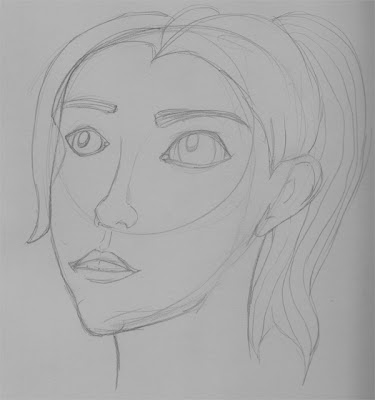I really enjoyed this assignment. I feel like so far as portraits it just works so much better in person as opposed to working from an image. At the last minute I decided to add the texture of the robe that I had my model wearing and I'm not sure that was a wise decision. I feel like I should have focused on the shading as opposed to the texture, I think it detracts from the overall image. Because it was such a heavy texture when I went back to pull out highlights the graphite just smudged. After seeing some of the other students self-portraits I think that if I were to do this again I would do my base drawing with graphite and then use charcoal for the rest of the process.
Portrait Assignment
To finish out the semester, we will be
working on a full-size portrait of another person. The portrait must be
from the waist or mid-chest up, and they must have their chest area
draped with a fabric of some sort (not a shirt or suit). This will allow
you to concentrate on their faces, their features, their surroundings,
and still have some areas to work into shape, form, mass, and texture if
possible.
Things to note:
Things to note:
- Using a model means that you MUST be able to coordinate with that person. DO NOT WAIT until the last minute. Be smart and set up a few times to use as backups.
- Take photos if you feel they will be helpful or allow you to work when the model is not around
- A bedsheet is less hot than a blanket, but use whatever you have
- Consider your lighting. You may want to set up lighting for the first 5-10 minutes of getting your model ready
- Consider your surroundings. Don't build a portrait floating in space. Show the entire area
- Consider whether you will use an idealized portrait, psychological portrait, or objective portrait
- You will be working on this for at least 2 weeks. That means you will need to be putting in 8-12 hours on this assignment alone. Make sure that your work reflects the amount of effort and time you are affording it.
- Works that appear rushed, unfinished, or were not given the proper amount of time and effort will be graded accordingly.












.jpg)

.jpg)

















